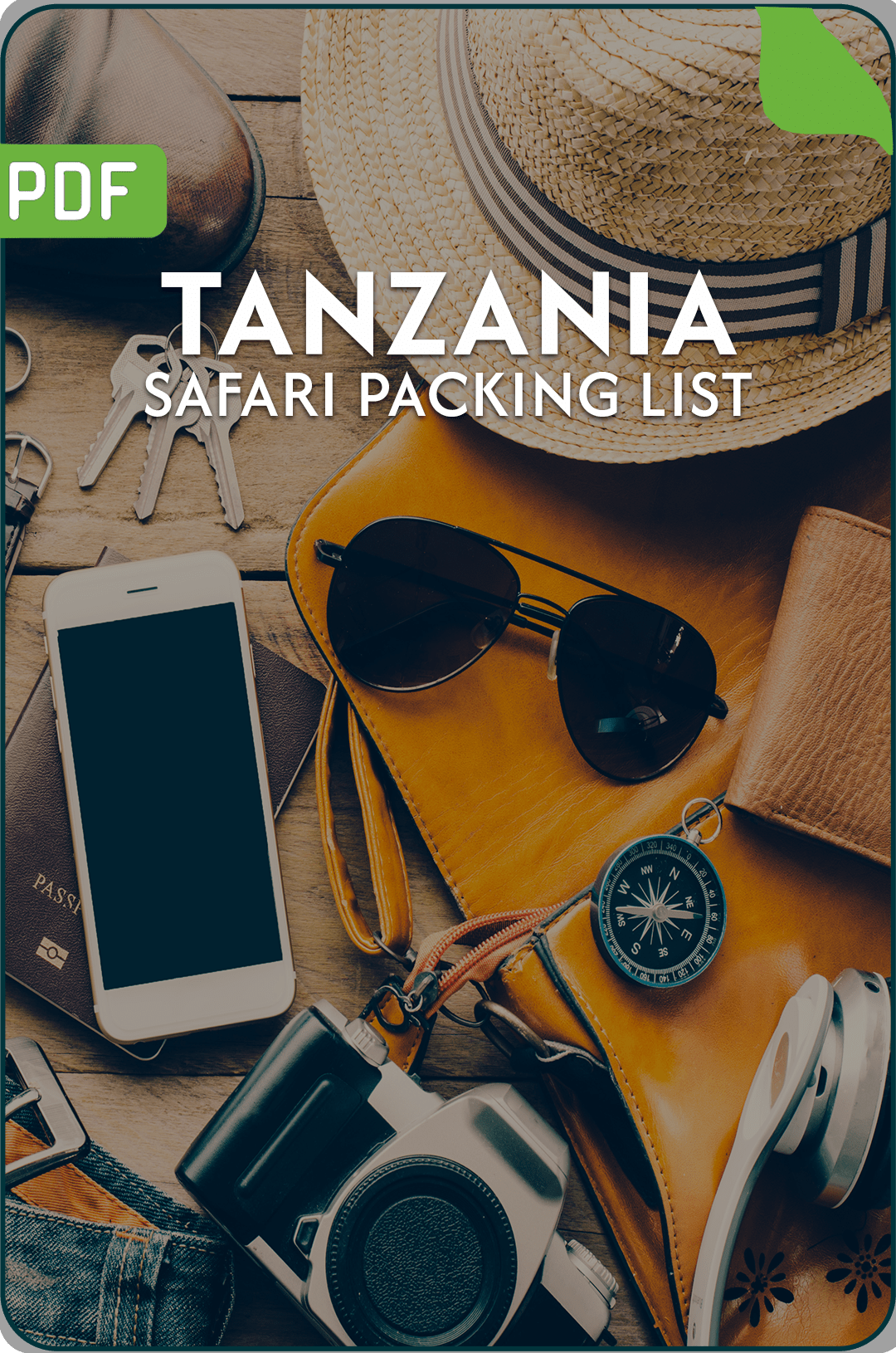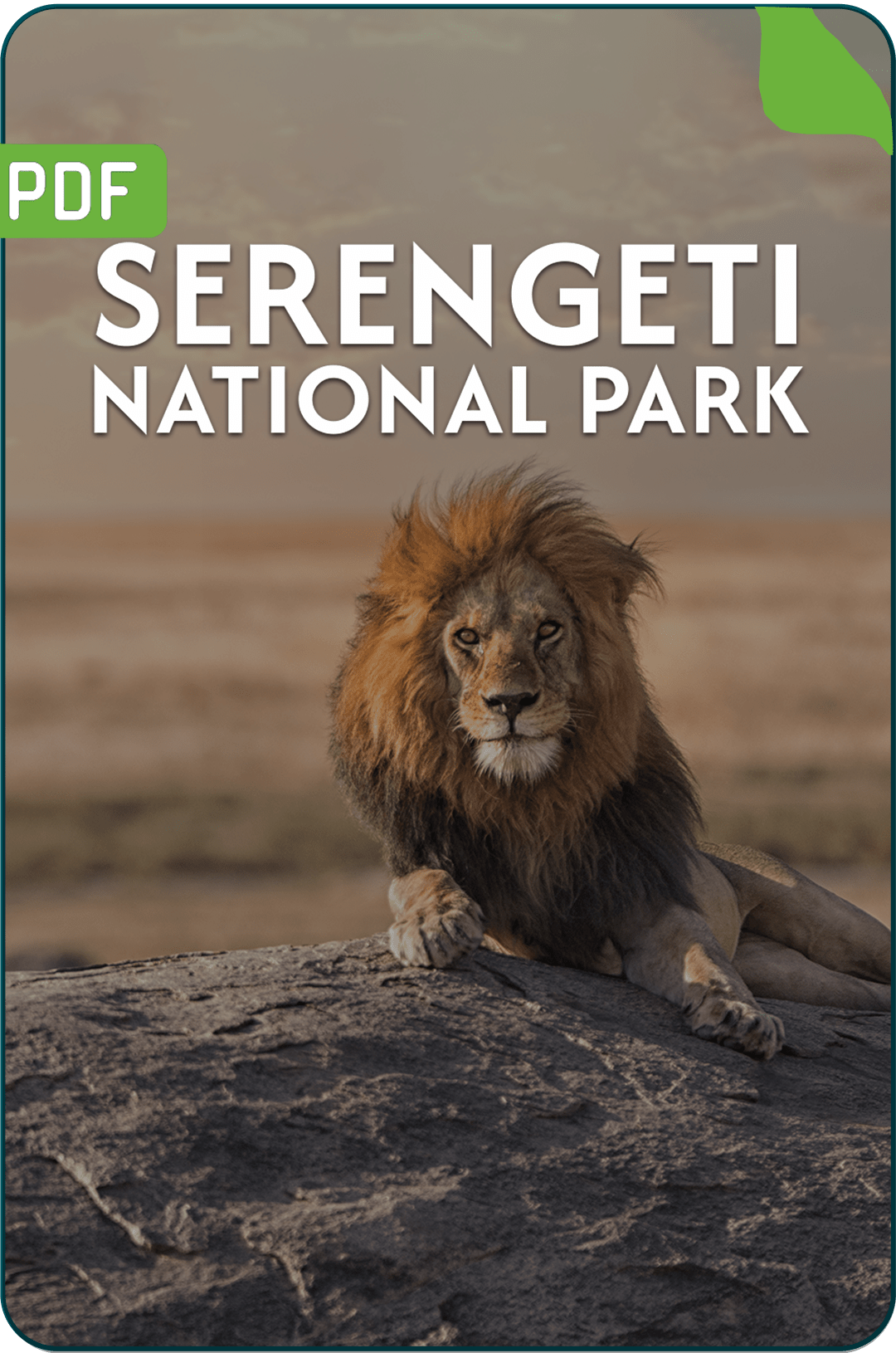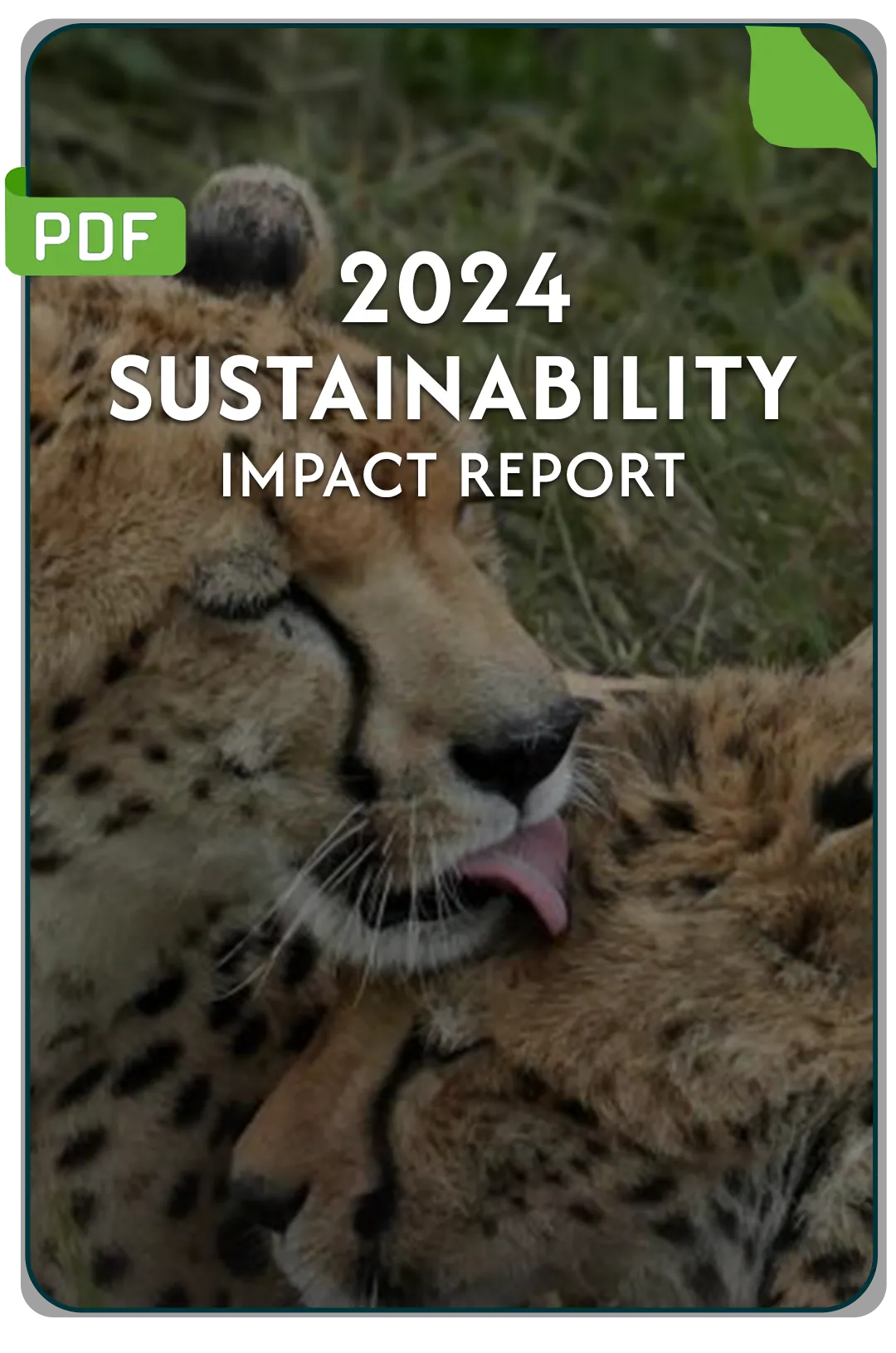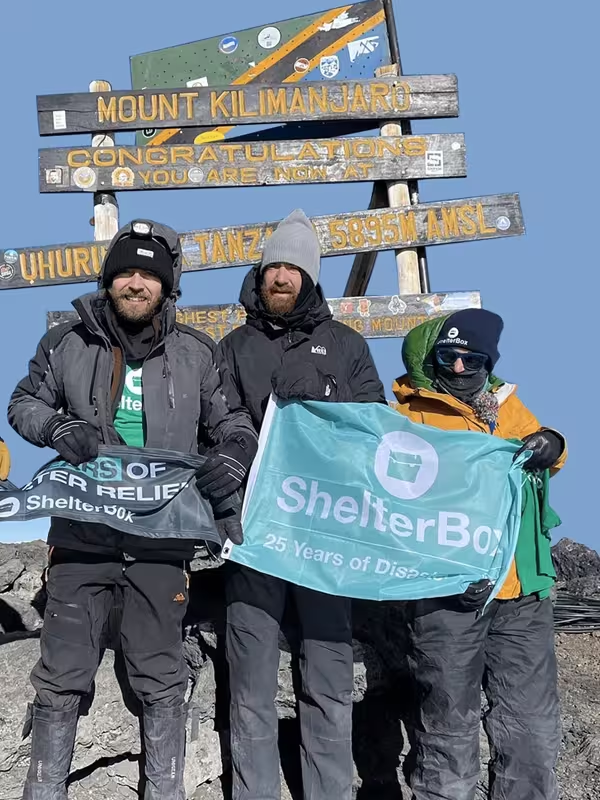Kilimanjaro Packing List
Tackling the highest peak on the African continent is no ordinary feat, and every seasoned Climber will tell you that the key to reaching the Kilimanjaro Summit is preparation. You need to be well-equipped with the right gear for withstanding the varied weather conditions and achieving a successful climb. Hence, we have created a complete Kilimanjaro Packing List to guide you through all the essentials that could make all the difference in your climb.
From essentials to tackle the shifting weather conditions, to gear designed to make the trek more comfortable, we have covered it all. Ready to start the packing for Mount Kilimanjaro Climbing Tours ? Here's everything you need to ace your trek, neatly compiled and ready to check off!
Packing For Kilimanjaro
Travelling to Kilimanjaro involves both international travel and backpacking. One key aspect of the Kilimanjaro Packing List is to keep your travel clothing and gear separate from your climbing gear, preferably in different luggage or duffel bags. You can leave these non-climbing essentials at a hotel or guide office and carry all the climbing essentials on your trek up Kilimanjaro.
Packing List for Kilimanjaro: The Daypack
For the actual climb, you'll need a medium-sized daypack (25–35 Liters). Your Kilimanjaro Daypack should include a sun hat, sunscreen, sunglasses, snacks, packed lunch, gloves, water, money, a passport, a camera, and extra warm clothing.
Packing List for Kilimanjaro: The Duffel Bag
The remaining gear for Kilimanjaro goes into a large, rugged, waterproof duffel bag, ideally of 95-litre capacity. This bag is carried by Kilimanjaro Porters from camp to camp and should not exceed 33 lbs. (15 kg). Also, it’s advisable to pack your items in garbage bags before stashing them in the duffel for extra waterproofing.
Key Points:
- Separate travel and climbing gear into different bags.
- The daypack should include essentials for daily hiking needs.
- The duffel bag should contain the remaining clothing and gear and should be waterproof and lockable.
- Keep the duffel bag weight under the specified limit (33 lbs. or 15 kg).
Factors That Influence The Kilimanjaro Packing List
Preparing your Packing List for Kilimanjaro involves careful contemplation of three essential factors - the weather, altitude, and the duration and type of your trek. These elements will significantly impact the gear you need for a successful Kilimanjaro Climb.
Impact Of Weather:
During your Mount Kilimanjaro Hike, the weather is the most crucial factor to consider.
The dry periods, January-March and June-October, are optimal for trekking, while April-May and November-December present more challenging weather conditions.
Each altitude level, from the humid rainforest at 800m-3000m to the icy Glacial zone at 5000m-5895m, presents unique weather conditions, influencing what you pack for Kilimanjaro.
Altitude Considerations:
The altitude on your Kilimanjaro Trek can make conditions more unpredictable and colder. Risks like frostnip and frostbite are more common at higher altitudes and get worse with low oxygen levels. This makes the selection of the right gear in your Kilimanjaro Gear List all the more crucial.
Duration And Trek Type:
The length of your trek, typically between 5-9 days, dictates the quantity of gear you'll need. Even though Kilimanjaro Porters will assist in carrying gear, you should ensure your duffel bag's weight is manageable, ideally not exceeding 15kg-20kg. This consideration will affect your Mt Kilimanjaro Packing List.
Key Note: – Remember, knowing What to Carry in Your Daypack on Kilimanjaro, understanding the gear you need to climb Mount Kilimanjaro, and selecting the Best Gear for Kilimanjaro are integral for a successful hike.
Key Considerations Before Climbing Kilimanjaro
Before we delve into the specifics of the Kilimanjaro Packing List, it's vital to address several key factors that should guide your packing decisions for Kilimanjaro. Here's a look at these important considerations:
- Climbing Kilimanjaro solo is not allowed – a certified guide is required.
- No showers on the mountain – pack for basic hygiene.
- Pack in two parts: duffel (carried by porters) and daypack (carried by you).
- Most Kilimanjaro Routes involve camping; only Marangu has huts.
- Kilimanjaro Porters carry your main gear between camps.
- It's cold at the summit year-round – pack warm layers.
- Dress in layers: base, mid, and outer.
- Bring comfy clothes for camp.
- Ideal fabrics: Merino wool or moisture-wicking gear.
- Budget options like cotton are okay if comfortable.
Now let's look at all the essential items you need to pack for your Climbing Mount Kilimanjaro expedition.
Safety Tips For A Full Moon Climb On Kilimanjaro
Climbing Kilimanjaro under the light of the full moon can be a magical experience. But it's important to keep safety in mind at all times. Here are some safety considerations to keep in mind when planning a Full Moon Climb On Kilimanjaro:
- Check the weather – Dry season offers good conditions, but be ready for sudden changes.
- Watch for altitude sickness – Acclimatize well, stay hydrated, and know the warning signs.
- Prepare for low visibility – Bring a headlamp (with extra batteries), map, and compass.
- Dress for cold nights – Pack extra layers and weather-appropriate gear.
- Stay with your group – Communicate, look out for each other, and act quickly if issues arise.
Travel Documents
Navigating international travel requires a certain set of documents. Without these, your journey to the peak of Kilimanjaro could be over before it begins. Here's what is the must-include in the Packing List for Kilimanjaro.
- A valid passport is crucial (ensure its up-to-date and renew if needed)
- Keep a copy of your passport (either digitally or separate from the original)
- Valid visa; no visa is required for German or European passport holders
- Your overseas health insurance policy Immunization record (verify and update your shots if necessary)
- Your flight ticket (either a hard copy or an e-ticket)
- Carry a travel credit card
- Have some cash on hand
- Maintain a list of emergency contacts and known allergies, if any.
Clothing For Mount Kilimanjaro
Climbing Mt Kilimanjaro requires thoughtful preparation due to the mountain's unique and often cold weather conditions. As temperatures can range from 18°C in the rainforest to -5°C at the peak, it's crucial to dress in layers that can be easily adjusted as the weather changes.
- Dress in layers to handle temps from 18°C to -5°C.
- Wear breathable, waterproof jacket and pants.
- Bring a warm down jacket or thick fleece for cold nights.
- Use a mid-layer fleece and lightweight base layers.
- Choose quick-dry trekking pants (convertible to shorts are a plus).
- Pack synthetic or Merino wool underwear; fresh daily.
- Carry waterproof gloves and thin liners; mitts for summit.
- Trekking T-shirts work early on; Merino wool is best.
Footwear For Kilimanjaro
- Choose waterproof leather boots with strong ankle support and a stiff midsole.
- Make sure boots have enough room for swollen feet.
- Bring spare laces and dry footbeds.
- Use trekking socks early on; switch to warm wool socks for summit night.
- Pack lightweight shoes or sandals for comfort at camp.
Headgear And Eyewear For Kilimanjaro
- Use a stretchy buff or fleece for sun, dust, and wind protection.
- Wear UV400 sunglasses with side shields to guard against strong UV rays.
- Bring a wide-brim sun hat to prevent sunburn and heatstroke.
- Pack a warm thermal hat for cold temperatures.
Alternatively, you can also download our Kilimanjaro Packing List PDF which contains all the list of items and tick off the checklist after stashing them inside your bag.
Basic Equipment
These are tools and items that are directly related to your climbing experience, ensuring your safety and comfort throughout the journey. Having a collection of these essential basic equipment can significantly impact the success and enjoyment of your trek. Here's a simplified list of basic equipment that should be added to your Kilimanjaro Gear List:
Sleeping Gear
Chilly nights on Kilimanjaro call for a four-season or -20°C rated sleeping bag. Also, don't forget to pack a compression sack to minimize space usage.
Additionally, you can carry an insulated mat and inflatable pillow to protect yourself from chilly weather. That way, you will have a comfy sleep space for yourself.
Scenic Recommendations: In case you don't have one, sleeping bags can be rented from our team in Tanzania.
Trekking Poles
Utilizing trekking poles is a matter of individual choice, yet they are highly suggested to aid with stability and lessen tiredness. You have the option to either rent or purchase these poles, but it's advisable to familiarize yourself with their use in your local surroundings before your trip.
Water Storage
You need to have the ability to carry at least 3 litres of water with you. A combination of a 2-3 litre hydration bladder and a 1-litre bottle is a good setup. Please note that disposable plastic bottles are not allowed on Kilimanjaro to protect the environment.
The Gear List for Climbing Mount Kilimanjaro is given in the below table. Do have a look!
Toiletries
As there are no permanent showers in the mountains, you will be only given a hot water bowl to wash your face and hands at the camps. Sometimes, you may be supplied with the hot water bowl in your tent by your guides.
Hence, consider packing some items that promote hygiene and protect you from any kind of infection. Below is a list of recommended toiletries for your Kilimanjaro Packing List:
List of Toiletries that are absolute must-haves when Climbing Kilimanjaro
|
TOILETRIES
|
|
ITEMS
|
DETAILS
|
|
Toilet Roll
|
Always carry one, you never know when you might need it.
|
|
Tissues
|
Helpful in the dusty desert zone.
|
|
Toothbrush and Toothpaste
|
Use eco-friendly products to maintain oral hygiene without harming the environment.
|
|
Wet Wipes
|
A convenient solution when showers are unavailable
|
|
Microfibre Towel
|
Lightweight and quick-drying, great for drying off after a water bucket clean-up.
|
|
SPF Lip Balm
|
Protects your lips from harsh UV rays at high altitudes.
|
|
Small Moisturizer
|
Counteract the dry air at higher elevations.
|
|
Broad Spectrum
Sunscreen
|
UV rays become more potent at altitude, requiring adequate protection.
|
|
Eye Drops
|
To soothe eyes irritated by dry mountain air.
|
|
Insect Repellent
|
Necessary in the rainforest zone to ward off bugs.
|
Special Note for Women : To make your trek more comfortable, females can consider adding the following items.
- A urinating device such as a Shewee allows you to pee while standing, a practical feature on a crowded mountain.
- An eco-friendly pee cloth, like a Kula Cloth, is an effective alternative to the drip-dry method.
- Also, pack your preferred menstrual products regardless of your cycle timing, as high altitude can sometimes trigger an unexpected period
And, if you tend to urinate during the night, a pee bottle could be a practical addition to prevent you from leaving your warm tent. Remember, comfort and preparedness can significantly enhance your Kilimanjaro trekking experience.
Medical Supplies
While guides carry a basic first aid kit, you should pack personal medical supplies for blisters, minor injuries, and altitude symptoms consult your doctor if unsure what to bring.
- Sanitizing gel or wipes
- Products for mosquito protection (for instance, Nobite, Autan, those containing DEET* or alike)
- Analgesics (like ibuprofen, aspirin)
- Medication for Kilimanjaro Altitude Sickness (such as Diamox)
- Anti-diarrhoea medicine (like Imodium Akut, activated charcoal)
- Antiseptic cream (like Bepanthen)
- Bandages and blister patches
- Water purification devices or iodine tablets
- Hypodermic Needle and Zinc Oxide Sports Tape for popping and dressing blisters.
- If required, electrolyte supplements (in powder or tablet form)
Electronics
There are no charging stations on Kilimanjaro, so pack essential electronics like a headlamp, power bank, extra batteries, and a camera, and manage your power use wisely.
Let's delve into the key electronic items that you may want to include in your Kilimanjaro Packing List:
List of the electronic items needed while Climbing Kilimanjaro
|
TECH ITEMS
|
DETAILS
|
|
Head Torch and Spare Batteries
|
An absolute necessity, especially for the summit night. It allows hands-free operation.
|
|
GPS/Altimeter
|
Not a requirement but can be beneficial for monitoring your progress and altitude.
|
|
Camera
|
A digital camera with a lightweight tripod will help you take great shots of the mountain. Bring spare SD cards, and a battery pack as they deplete quickly in cold.
|
|
Power Pack
|
As there are no charging stations, a compact power pack with USB cables becomes invaluable.
|
A Note To Climbers: Plan your electronic Gear List for Kilimanjaro carefully to balance between necessity and weight, as each additional item adds to your load.
Keep in mind the cold weather's impact on battery life and plan your power needs accordingly. Ultimately, the goal is to fully enjoy the trekking, not burden it with unnecessary tech.
Other Essentials
Beyond clothing and gear, a few often-overlooked items can greatly improve your comfort and experience on the Kilimanjaro climb. These small additions can help ensure a safer, smoother, and more enjoyable trek.
List of Other Essential Items to be Included in Kilimanjaro Packing List
|
OTHER ITEMS
|
DETAILS
|
|
Snacks
|
Pack high-energy, non-perishable snacks like trail mix, energy bars, and dried fruits to keep your energy levels up while climbing.
|
|
Ear plugs
|
Ear plugs can help block out any potentially disruptive noise, ensuring you are well-rested for the next day’s climb.
|
|
Small torch
|
Opt for a lightweight, compact torch that won't take up too much space in your bag. It will help you move around the campsite at night.
|
|
Spare Contact Lenses/Glasses
|
If you depend on these for vision, having a backup pair is essential. Don’t forget a sturdy case to protect them.
|
|
Flask
|
A flask is a great addition to your Kilimanjaro packing list. Staying hydrated is crucial at high altitudes, and a flask allows you to carry water easily and keep it at a desirable temperature.
|
|
Umbrella
|
Umbrella provides quick shelter from sudden rain showers or intense sun. Choose a small, lightweight, and sturdy travel umbrella that can withstand strong winds.
|
|
Ziplock bags
|
These bags are required to carry important possessions such as money, passport, etc.
|
Top Tips For Preparing Your Kilimanjaro Gear
Here are some top tips to ensure your gear preparation is on point:
- Preparing in advance is key. Don't wait until the eleventh hour to assemble your gear.
- Carefully go through our "Kilimanjaro Packing List" and cross-check it with what you already own. This will help you identify the items you need to acquire.
- Hunt for discounts. Numerous sites offer high-quality gear for discounted prices. Find those cost-effective deals and save some money.
- Practice Packing. Regularly pack and unpack your bag to have a thorough understanding of where each item is located.
- Get comfortable with your gear. Practice hiking in your local area with hiking boots, daypack, and trekking poles to get acquainted with the gear.
- Plan for the entire journey. Consider the period before and after your climb.
Fortunately, most hotels allow you to leave excess luggage while you tackle the mountain, so plan your Kilimanjaro Climb Packing List accordingly.
Lastly, if you are still unclear about any aspect of your Kilimanjaro Hike Gear List, our team of experts is ready to assist you. Don’t hesitate to reach out to us!
Important Kilimanjaro Packing List Information
When preparing your Kilimanjaro Packing List, several key factors must be considered to ensure a successful and enjoyable hike.
Weight Limits
Your main duffel bag will be carried by porters during your climb on Kilimanjaro. But, there's a weight rule: the bag can only be up to 15 kg (35 pounds). If your bag weighs more or if you have extra bags, you'll need to hire an additional porter.
How To Pack
Use packing cubes or large resealable bags to organize your gear within your duffel bag. They keep your gear organized and dry, making it easier for you to locate items when needed.
What To Pack
We have provided a comprehensive Gear List for Kilimanjaro for your convenience. Ensure you effectively utilize this list by checking off each item as you pack, guaranteeing you're well-prepared for the climb.
Important Note: Kilimanjaro National Park encourages plastic-free hikes to preserve the mountain's natural beauty. So make sure you avoid carrying plastic to the mountain. Opt for reusable water bottles and avoid packing items in plastic bags and save the environment.
Kilimanjaro Packing List With Estimated Prices To Buy
For climbers who prefer to purchase their own gear rather than rent, here's a helpful guide with estimated price ranges to help you plan and prepare financially.
Essential Items Needed for Climbing Kilimanjaro and their estimated prices.
|
Item
|
Price (USD)
|
|
Hiking Boots
|
$100-$200
|
|
Waterproof Jacket and Pants
|
$50-$200
|
|
Base Layers
|
$40-$100
|
|
Gloves
|
$20-$50
|
|
Headlamp
|
$20-$50
|
|
Daypack
|
$50-$150
|
|
Duffel Bag
|
$60-$150
|
|
Trekking Poles
|
$20-$100
|
|
Sleeping Bag
|
$100-$300
|
Note: Remember, these prices are estimations and can vary based on brands, quality, and location of purchase.
However, the alternative of renting equipment is also available for those climbers who don’t want to invest in buying stuff themselves.
- Renting presents an opportunity to save money and simplify packing.
- This also allows for the acquisition of last-minute items once you've arrived in Tanzania.
At our company, African Scenic Safaris, we have the option of providing rental services for sleeping bags and some other essential gear. For a detailed list, you can download our Kilimanjaro Packing List PDF or else, talk to our team of experts who will guide you pack efficiently for Kilimanjaro Climbing Tours.
Excited for your Kilimanjaro Climbing adventure! With our packing list, you’ll have everything covered for a smooth climb. Begin your journey with confidence – book your climb with us today and let’s make it happen!
What Not To Pack For Kilimanjaro?
Remember careful packing for Mount Kilimanjaro Climbing also involves being mindful of things that should be left behind. Some items can take up unnecessary space, add weight, or simply not be needed on the mountain. Hence, it’s better to avoid them and not include them in the Packing List for Kilimanjaro:
- Hair Dryer- There's no electricity on the mountain, and you won't be showering often.
- Loud Speakers- Opt for headphones instead, as loud music can disturb others.
- Laptops- Without charging opportunities, these are best left behind.
- Heavy Tripods- A lightweight one could work, but remember that fatigue is a factor.
- Makeup- You won't need it on the mountain, and it's generally not used.
- Universal Plug Adaptor- There are no sockets on Kilimanjaro.
- Pressurized Spray Bottles- These can explode at high altitudes.
- Alcohol- It's banned in the national park and not conducive to maintaining good health.
- Excessive Gear- Pack lightly as you or your porters will carry everything.
- Items Provided by Guides- Tents, chairs, camp stoves, and cooking gear are usually supplied.
- Computers and Tablets- There's no WiFi, and these devices are often fragile.
- Disposable Items- Aim for sustainability and bring reusable items.
- Fancy Clothing- Functionality is more crucial than style on the mountain.
Gear Up For Your Kilimanjaro Adventure
As you gear up for the exciting journey of Climbing Mount Kilimanjaro, meticulous planning becomes your greatest ally. And, our thoughtfully curated Kilimanjaro Packing List is a roadmap designed to guide you through this planning and packing process, ensuring no essential item is left behind.
So, if you are ready to turn your dream into a reality, discover our bespoke Kilimanjaro Climbing Packages at African Scenic Safaris. Set out on the journey of a lifetime with us, knowing you're armed with the right gear and backed by the best team. Book your climb today!
Kilimanjaro Packing List PDF
Download our free Kilimanjaro Packing List PDF for essential gear tips and expert recommendations from African Scenic Safaris experts.
Explore Kilimanjaro Travel Guide
Find essential topics below to help you plan, prepare, and enjoy your Kilimanjaro travel experience fully.
Climb Kilimanjaro With Us
Get ready for a mountain adventure with real advice, smiling guides, and simple help that actually works. We’re with you from start to summit.
Frequently Asked Questions
As temperatures vary greatly from the base to the summit, it's recommended to pack clothes for layering.
This typically includes a base layer (thermal underwear), mid layer (fleece or down jacket), and outer layer (waterproof and windproof jacket and trousers).
High-quality, waterproof, and broken-in trekking boots are crucial for your comfort and safety. Additionally, bring multiple pairs of moisture-wicking socks for your Kilimanjaro Climb .
A good quality, 4-season sleeping bag is essential for warmth during cold nights. You may bring your sleeping bag and in case you don’t, our guides will supply a sleeping bag during Kilimanjaro Hike.
Trekking poles are not a must, but they're highly recommended. They can help with balance and reduce the impact on your knees and legs during descents.
A comfortable, well-fitted, 20-35 litre daypack is ideal for carrying your essentials like water, snacks, a camera, sunscreen, and additional layers during the day.
In your daypack, include items like water, high-energy snacks, sunscreen, a camera, extra layers of clothing, sunglasses, a hat, a first-aid kit, and other personal items you may need easy access to during the day.
The views are spectacular! But remember, batteries drain quickly in cold temperatures, so keep them warm and bring spares.
Consult your healthcare provider for advice on medications like Diamox which can help prevent altitude sickness. Also, hydration and gradual acclimatization are key to preventing Altitude Sickness In Kilimanjaro.
Wet wipes, travel-sized toiletries, small towels, toothbrushes and toothpaste, hand sanitizer, and toilet paper are some of the essentials.
Yes, most tour operators set a weight limit for your duffel bag carried by porters (usually 15kg/33 lbs). Your daypack isn't included in this limit, but remember, you'll be carrying it, so keep it light.
Simbo Natai, founder of African Scenic Safaris, crafts sustainable, meaningful Tanzanian journeys rooted in his deep local knowledge and passion.
Director




























 African Scenic Safaris #1 on TripAdvisor
African Scenic Safaris #1 on TripAdvisor 




